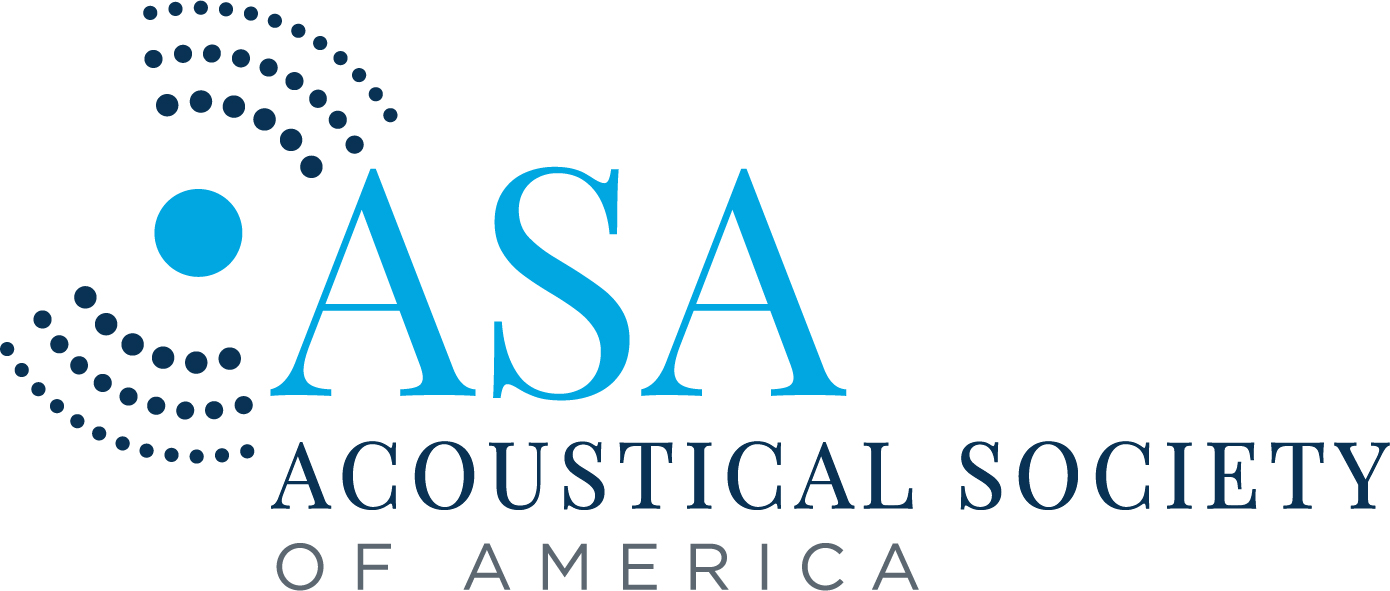Acoustical Society of America Announces Winners of Science Communication Awards
Acoustical Society of America Announces Winners of Science Communication Awards

Each non-ASA member award includes a $2,500 cash prize and a $1,000 reimbursement to attend the awards ceremony at the 186th ASA Meeting taking place in Ottawa, Canada, 13-17 May 2024. Each ASA member award includes a $1,000 cash prize. The winners of the 2023 ASA Science Communication Awards are as follows:
Non-acoustic Expert Multimedia Winner
In the SciShow episode, “5 Places with Amazing Acoustics from Thousands of Years Ago,” show host Hank Green captivates the audience with insightful exploration of acoustics in historical settings. Viewers are transported to ancient venues renowned for their exceptional soundscapes and learn about what acoustic phenomena are taking place. Through engaging storytelling and accessible explanations, this SciShow episode brings the wonders of acoustics to life, inspiring viewers to appreciate the acoustic marvels of the past.
Honorable mentions in this category go to Bartosz Ciechenowski’s interactive science blog, Sound and the Short Wave podcast episode, Experience The Quietest Place On Earth, hosted by Margaret Cirino, Regina G. Barber, and Gabriel Spitzer.
Acoustic Expert Multimedia Winner
The Rest is Just Noise Podcast stands out as a remarkable audio journey into the realm of acoustics. With deep knowledge and captivating storytelling, co-hosts Dr. Andrew Mitchell, Dr. Francesco Aletta, and Dr. Tin Oberman explore various acoustical phenomena and their impact on our lives. Through interviews with experts and immersive soundscapes, this podcast educates and entertains listeners, creating a space where the beauty and significance of acoustics are celebrated.
Honorable mentions go to the Listen Lab video, What should Ant-Man’s voice sound like when he changes size?, created by Matthew Winn and the documentary, Fathom, directed by Drew Xanthopoulos and featuring Ellen Garland and Michelle Fournet.
Long Form Print Winner
David George Haskell’s Sounds Wild and Broken: Sonic Marvels, Evolution’s Creativity, and The Crisis of Sensory Extinction emerges as a thought-provoking exploration of the intricate relationship between sound, nature, and human existence. Haskell masterfully weaves together scientific research, personal anecdotes, and philosophical reflections to highlight the urgency of preserving our sonic ecosystems. With eloquence and depth, this book challenges readers to reconsider their relationship with sound and the natural world.
Honorable mentions go to Karen Bakker’s The Sounds of Life: How Digital Technology Is Bringing Us Closer to the Worlds of Animals and Plants and Nina Kraus’ Of Sound Mind, How Our Brain Constructs a Meaningful Sonic World.
Short Form Print Winner
Ute Eberle’s captivating Knowable Magazine article, “Life in the Soil Was Thought to Be Silent. What If It Isn’t?,” shines a light on the often-overlooked acoustic richness beneath our feet. Eberle’s insightful exploration uncovers the hidden symphony of the soil, revealing the vital role sound plays in the ecosystem. Through her meticulous research and engaging prose, Eberle challenges preconceptions, opening a new realm of wonder and discovery.
Honorable mentions go to the Scientific American article, What Birds Really Listen for in Birdsong (It’s Not What You Think) by Adam Fishbein and Speaking in whistles by Bob Holmes, another Knowable Magazine article.
The 2023 award cycle reviewed content created between 2021 and 2022. A total of 73 nominations were received for the ASA Science Communication Awards, showcasing the breadth and depth of acoustics communication endeavors. The ASA extends its congratulations to the winners and honorable mentions for their exceptional contributions to acoustics communication. These projects have successfully bridged the gap between complex scientific concepts and the public, fostering a greater understanding and appreciation for the fascinating world of acoustics. The next award cycle will review content created between 2023 and 2024, with the call for nominations in the spring of 2025.
———————– MORE INFORMATION ———————–
ABOUT THE ACOUSTICAL SOCIETY OF AMERICA
The Acoustical Society of America (ASA) is the premier international scientific society in acoustics devoted to the science and technology of sound. Its worldwide membership represents a broad spectrum of the study of acoustics. ASA publications include The Journal of the Acoustical Society of America (the world’s leading journal on acoustics), JASA Express Letters, Proceedings of Meetings on Acoustics, Acoustics Today magazine, and standards on acoustics. The society also holds two major scientific meetings each year. See https://acousticalsociety.org/.

 Melville, May 19, 2023 – The Acoustical Society of America (ASA) announced that four projects are the winners of the ASA Special Awards presented at the Regeneron International Science and Engineering Fair (Regeneron ISEF). The top three finalists have been awarded cash prizes for their research and all four project finalists are invited to attend an ASA Meeting.
Melville, May 19, 2023 – The Acoustical Society of America (ASA) announced that four projects are the winners of the ASA Special Awards presented at the Regeneron International Science and Engineering Fair (Regeneron ISEF). The top three finalists have been awarded cash prizes for their research and all four project finalists are invited to attend an ASA Meeting.


